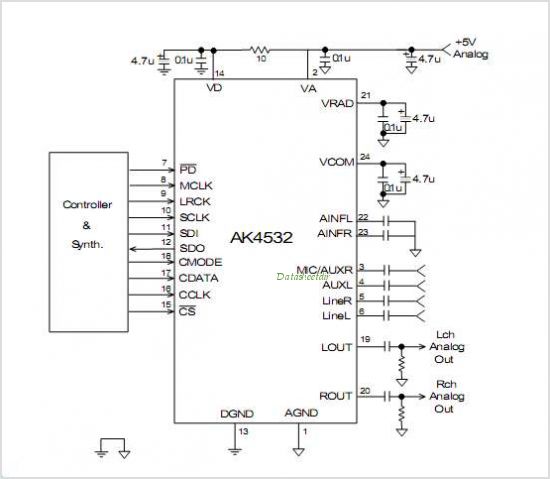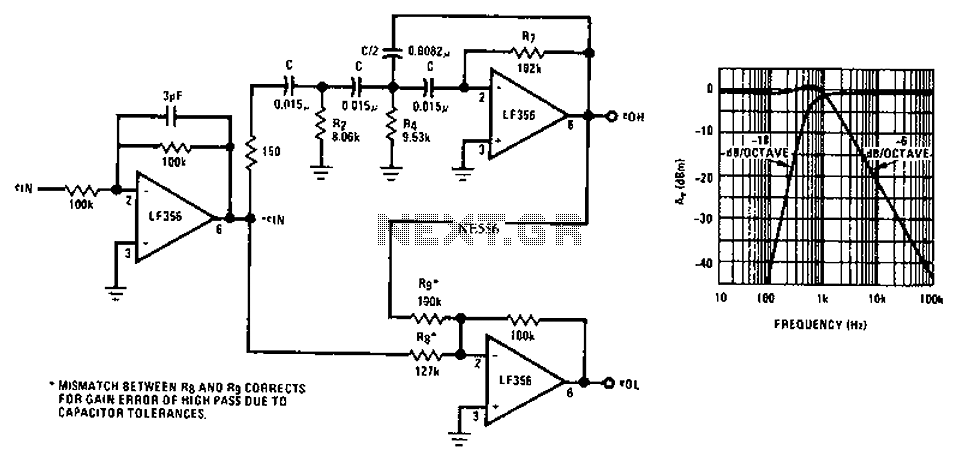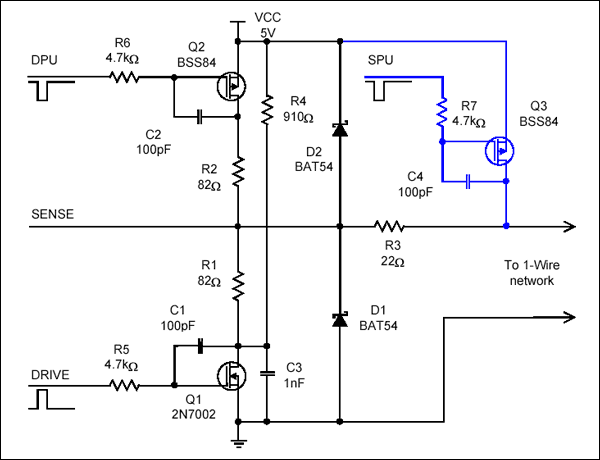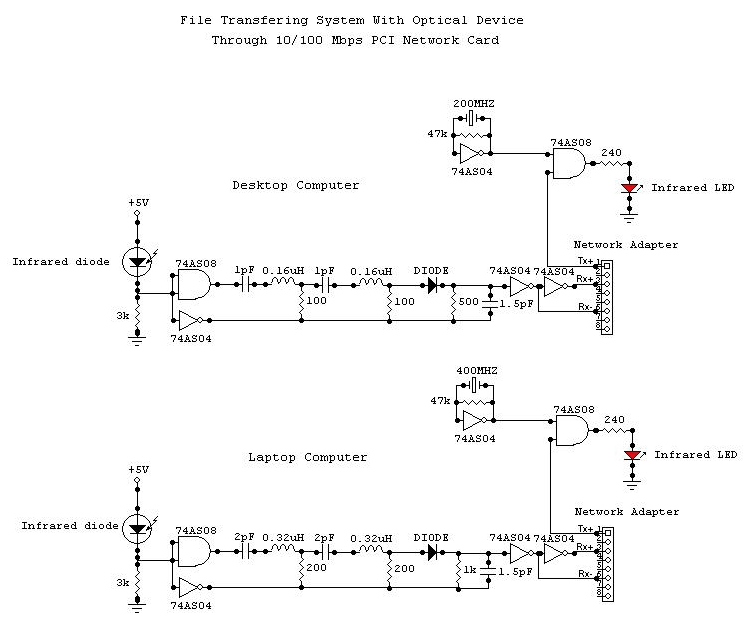
network rs232
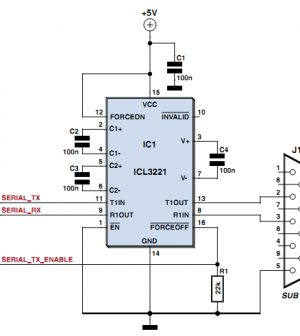
A significant number of modules still utilize an RS232 interface. This is understandable, as RS232 can be easily implemented on a microcontroller using just two I/O pins and a line driver such as the MAX232. When the master device is a PC, accessing the serial port is relatively straightforward on both Windows and Linux platforms. Typically, these modules feature a text terminal interface that interprets single-line commands with arguments and generates responses accordingly.
A challenge arises when multiple RS232 modules are integrated into a project, as each module necessitates a dedicated serial interface at the master. A hardware solution, such as an RS232 multiplexer, could address this issue, but a more elegant solution would be to create an RS232 network where all modules share the transmit and receive lines to a single master interface. In this configuration, all modules operate at the same speed, with consistent start and stop bits and no flow control. When idle, all modules listen for commands from the master while their transmitters remain disabled. Each module is assigned a unique identifier, which the master sends as a single line command (e.g., "2/n" selects module 2). If a module recognizes an identifier that matches its own, it becomes active, decodes commands, and enables its transmitter for the duration of the response. Conversely, if the identifier does not match, the module remains inactive, refraining from decoding commands and ensuring its transmitter stays disabled.
To facilitate this functionality, the RS232 driver electronics must be capable of tri-stating the transmitter while keeping the receiver operational. The traditional MAX232 driver is not suitable for this purpose; however, alternatives such as the ICL3321 and MAX242 are viable options. These drivers feature low-power shutdown modes that deactivate the charge pump and transmitters while keeping the receivers active for monitoring RS232 activity. The number of modules in the RS232 network is constrained by the nominal 5 kΩ pull-down resistor at the receiver input of the line driver. Increasing the number of modules adds load to this signal, which can diminish the maximum operating speed and cable length. Testing with five modules at 9,600 bps within a 1-meter distance presented no issues.
Modules require a method to enable network mode and assign a unique identifier. This can be accomplished through switches, jumpers, or, if I/O pins are limited, by storing the configuration in the user EEPROM/Flash memory available in many microcontrollers. If the latter approach is utilized, it is reasonable to assume the module will only be configured for standard RS232 operation. Special configuration commands can be designed to be decoded regardless of identifier matching. It is improbable that commercially available modules can be modified to support network RS232 unless the manufacturer has incorporated a suitable RS232 line driver and is willing to provide the necessary firmware. Nonetheless, it is feasible to implement this functionality in DIY modules, suggesting that module designers could enhance the capabilities of their future products by considering this networked approach.
This RS232 network configuration allows for efficient communication between multiple devices, reducing the complexity and hardware requirements typically associated with traditional point-to-point RS232 connections. By leveraging the unique identifiers and tri-state capabilities of advanced line drivers, a robust and scalable communication system can be established, facilitating a wide range of applications in embedded systems and industrial automation.A surprising number of modules still have an interface based on RS232. No wonder, as RS232 is easy implemented on a microcontroller with two I/O pins and a line driver such as the MAX232. In the case where the master is a PC, the serial port is relatively easy to access on both Windows and Linux.
Usually modules implement a text terminal interface that decodes single line commands with arguments and generate a reply like this: A complication occurs when there are a number of RS232 modules in a project, as each requires a serial interface at the master. A hardware solution in the form of an RS232 multiplexer would be a solution but wouldn`t it be nice to get this functionality for free!
By deviating from the original aim of RS232 as a point-to-point link, we can have an RS232 network in which all the modules share both transmit and receive lines to one master inter-face. All modules operate at the same speed, start and stop bits with no flow control. When idle, all the modules are listening for commands from the master and have their transmitters disabled.
Each module is configured with an identifier consisting of a number that the master sends as a single line (e. g. 2/n` selects module 2). If a module receives an identifier that matches its own, it is selected and can decode commands and drive its transmitter for the duration of the reply.
Conversely, if the identifier does not match it must not decode commands and ensure its transmitter remains disabled. In addition to some firmware sup-port, the RS232 driver electronics must be able to tri-state the transmitter while keeping the receiver operational.
Sadly, the classic MAX232 driver is unsuitable but the ICL3321 and MAX242 are possible candidates for our purpose. These have low-power shutdown modes that power-down the charge pump and transmitters but keep the receivers enabled for monitoring RS232 activity.
The number of modules in your RS232 network is limited by the (nominal) 5 k pull-down at the receiver input of the line driver device. Multiple modules increase the loading on this signal, reducing the maximum operating speed and cable length.
Using the circuit shown here, running an application with five modules at 9, 600 bps located within 1 meter of each other did not present any problem. Modules need a means of enabling the network mode and setting the unique identifier. This can be done via switches, jumpers or, if I/ O pins are scarce, by storing the configuration in the user EEPROM/Flash provided by many microcontrollers.
If the latter is done, it is reasonable to assume the module will only be configured with normal RS232. Special configuration commands can then be provided that are always decoded irrespective of the identifier match.
It is unlikely that commercially available modules can be tweaked to support network` RS232 unless the vendor has used a suitable RS232 line driver and is prepared to provide the firmware code. However, it is possible to implement on DYI modules and perhaps module designers can take note and enhance the functionality of their future designs.
🔗 External reference
A challenge arises when multiple RS232 modules are integrated into a project, as each module necessitates a dedicated serial interface at the master. A hardware solution, such as an RS232 multiplexer, could address this issue, but a more elegant solution would be to create an RS232 network where all modules share the transmit and receive lines to a single master interface. In this configuration, all modules operate at the same speed, with consistent start and stop bits and no flow control. When idle, all modules listen for commands from the master while their transmitters remain disabled. Each module is assigned a unique identifier, which the master sends as a single line command (e.g., "2/n" selects module 2). If a module recognizes an identifier that matches its own, it becomes active, decodes commands, and enables its transmitter for the duration of the response. Conversely, if the identifier does not match, the module remains inactive, refraining from decoding commands and ensuring its transmitter stays disabled.
To facilitate this functionality, the RS232 driver electronics must be capable of tri-stating the transmitter while keeping the receiver operational. The traditional MAX232 driver is not suitable for this purpose; however, alternatives such as the ICL3321 and MAX242 are viable options. These drivers feature low-power shutdown modes that deactivate the charge pump and transmitters while keeping the receivers active for monitoring RS232 activity. The number of modules in the RS232 network is constrained by the nominal 5 kΩ pull-down resistor at the receiver input of the line driver. Increasing the number of modules adds load to this signal, which can diminish the maximum operating speed and cable length. Testing with five modules at 9,600 bps within a 1-meter distance presented no issues.
Modules require a method to enable network mode and assign a unique identifier. This can be accomplished through switches, jumpers, or, if I/O pins are limited, by storing the configuration in the user EEPROM/Flash memory available in many microcontrollers. If the latter approach is utilized, it is reasonable to assume the module will only be configured for standard RS232 operation. Special configuration commands can be designed to be decoded regardless of identifier matching. It is improbable that commercially available modules can be modified to support network RS232 unless the manufacturer has incorporated a suitable RS232 line driver and is willing to provide the necessary firmware. Nonetheless, it is feasible to implement this functionality in DIY modules, suggesting that module designers could enhance the capabilities of their future products by considering this networked approach.
This RS232 network configuration allows for efficient communication between multiple devices, reducing the complexity and hardware requirements typically associated with traditional point-to-point RS232 connections. By leveraging the unique identifiers and tri-state capabilities of advanced line drivers, a robust and scalable communication system can be established, facilitating a wide range of applications in embedded systems and industrial automation.A surprising number of modules still have an interface based on RS232. No wonder, as RS232 is easy implemented on a microcontroller with two I/O pins and a line driver such as the MAX232. In the case where the master is a PC, the serial port is relatively easy to access on both Windows and Linux.
Usually modules implement a text terminal interface that decodes single line commands with arguments and generate a reply like this: A complication occurs when there are a number of RS232 modules in a project, as each requires a serial interface at the master. A hardware solution in the form of an RS232 multiplexer would be a solution but wouldn`t it be nice to get this functionality for free!
By deviating from the original aim of RS232 as a point-to-point link, we can have an RS232 network in which all the modules share both transmit and receive lines to one master inter-face. All modules operate at the same speed, start and stop bits with no flow control. When idle, all the modules are listening for commands from the master and have their transmitters disabled.
Each module is configured with an identifier consisting of a number that the master sends as a single line (e. g. 2/n` selects module 2). If a module receives an identifier that matches its own, it is selected and can decode commands and drive its transmitter for the duration of the reply.
Conversely, if the identifier does not match it must not decode commands and ensure its transmitter remains disabled. In addition to some firmware sup-port, the RS232 driver electronics must be able to tri-state the transmitter while keeping the receiver operational.
Sadly, the classic MAX232 driver is unsuitable but the ICL3321 and MAX242 are possible candidates for our purpose. These have low-power shutdown modes that power-down the charge pump and transmitters but keep the receivers enabled for monitoring RS232 activity.
The number of modules in your RS232 network is limited by the (nominal) 5 k pull-down at the receiver input of the line driver device. Multiple modules increase the loading on this signal, reducing the maximum operating speed and cable length.
Using the circuit shown here, running an application with five modules at 9, 600 bps located within 1 meter of each other did not present any problem. Modules need a means of enabling the network mode and setting the unique identifier. This can be done via switches, jumpers or, if I/ O pins are scarce, by storing the configuration in the user EEPROM/Flash provided by many microcontrollers.
If the latter is done, it is reasonable to assume the module will only be configured with normal RS232. Special configuration commands can then be provided that are always decoded irrespective of the identifier match.
It is unlikely that commercially available modules can be tweaked to support network` RS232 unless the vendor has used a suitable RS232 line driver and is prepared to provide the firmware code. However, it is possible to implement on DYI modules and perhaps module designers can take note and enhance the functionality of their future designs.
🔗 External reference
